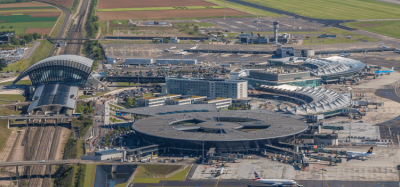Why we rebuilt the airport brain, and what happened next
Posted: 6 October 2025 | Hayden Davies - GM Product Veovo | No comments yet
The Airport Operational Database (AODB) is often called the airport brain. The problem is that most AODBs were designed for a different world.


After a recent software update, something remarkable happened at one of Europe’s largest airport groups. Data processing speeds increased twelvefold, billing calculations ran four times faster, and what used to take hours now took minutes. That is not a minor win; it is transformational.
And it is exactly why we set out to rebuild the core of airport operations and revenue management from the ground up.
The AODB: still the airport brain
The Airport Operational Database (AODB) is often called the airport brain. It stores and shares operational data, from flight schedules and gate allocations to turnaround sequences. Every decision flows from it.
The problem is that most AODBs were designed for a different world, one of predictable schedules, slow data exchange, and decade-long upgrade cycles. Today, conditions change by the hour and disruptions spread fast. Old systems cannot keep up.
From rigid systems to flexible platforms
For decades, monolithic systems did their job. But today, one change risks breaking ten others. In an environment where complexity shifts daily, that is not good enough.
At Veovo, we made a conscious decision to take a different path. Not just to modernise the interface or add a few APIs. But to fundamentally rethink how an airport operations platform should work: fast, flexible, open, and always on.
Our platform runs on microservices with CI/CD pipelines (continuous integration and continuous delivery). That means new features and fixes can be rolled out quickly, in small, controlled steps, without downtime. Airports stay current, secure, and ready to adapt.
This is how operational software should work in 2025: reliable change, delivered on your terms. Not quite Netflix, this is airport ops, after all, but certainly a lifetime away from the rigid ERP-style systems of the past.
Real results in real airports
The gains are tangible. That European airport group cut month end reconciliation from hours to minutes. In Australia, another airport is meeting strict audit and security standards with their new operations platform. Their teams are less reactive, more proactive.
These improvements free up time, reduce manual effort, and strengthen trust in data.
Reimagining, not replacing
People often ask if we’re replacing the AODB. We’re not. We’re evolving it, building on insights from 140+ airport customers. The system has always been the heartbeat of the airport, but it was never built for real-time data, dynamic collaboration, or today’s operational agility.
We re-architected it on manage-by-exception principles and an event-driven model. Every flight update, delay, or gate change becomes a live signal, instantly available to any connected service or stakeholder.
To use a sport’s analogy, it’s the difference between watching a replay and seeing the match unfold play by play, in real time.
Built for a 24/7 world
Airports never stop, and neither should their systems. That is why we run operational platforms globally across AWS, Azure, Oracle Cloud and regional providers such as Asergo, moving a terabit of data every hour.
Airports can choose all cloud regional deployment for sovereignty, hybrid setups with on-prem AODBs and full cloud forecasting. There is no longer a trade-off between speed, compliance and resilience.
Start small, scale fast
Modernisation is often seen as risky. Many CIOs and CTOs worry about ripping out core systems. That is why our platform is modular. Airports can begin with aeronautical billing or smarter resource planning. Then layer in predictive insights such as off-block forecasts or passenger show-up profiles.
At Auckland Airport, machine learning off-block predictions proved 20 percent more accurate than manual estimates. That sharpened stand planning and turnaround efficiency without requiring wholesale change.
With microservices and CI/CD, airports can improve step by step, while operations continue.
Results that matter
This approach delivers practical outcomes:
- Billing discrepancies resolved in minutes, not days
- Stand allocations adjusted before conflicts emerge
- Bottlenecks identified before passengers feel them.
This is how airports move from efficient to proactive. The more data that flows through, the stronger the predictions become, compounding benefits over time.
The road to Total Airport Management
Rebuilding the AODB is not the finish line. It is the foundation for Total Airport Management, where every team, resource, and passenger interaction is connected by real-time intelligence.
AI models are already predicting congestion, aligning check-in with demand, and automating gate allocation. With every update, the system learns not only how to respond to disruption but to learn from it and prevent the next one.
Where next


Technology should support airport teams, not slow them down. If we’ve done our job right, our platform will fade into the background and let airport teams do what they do best: keep the world moving.
That is the vision Veovo is building towards, smarter airports that adapt, predict, and act in real time. And judging by the performance gains we are already seeing, the journey has only just begun.
Related topics
Airside operations, Artificial intelligence (AI), Data, Digital transformation, New technologies, Operational efficiency, Passenger experience and seamless travel, Terminal operations


















